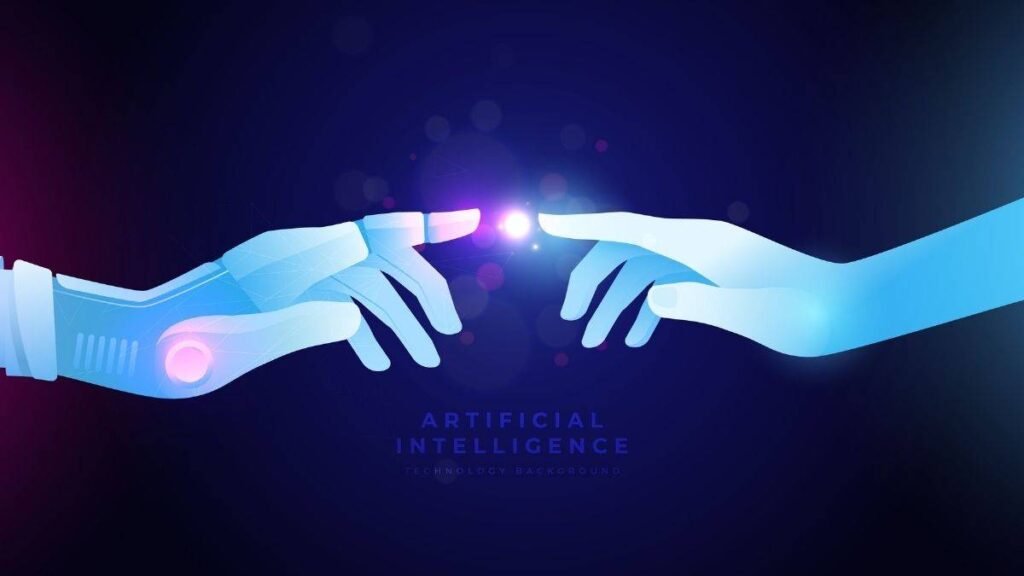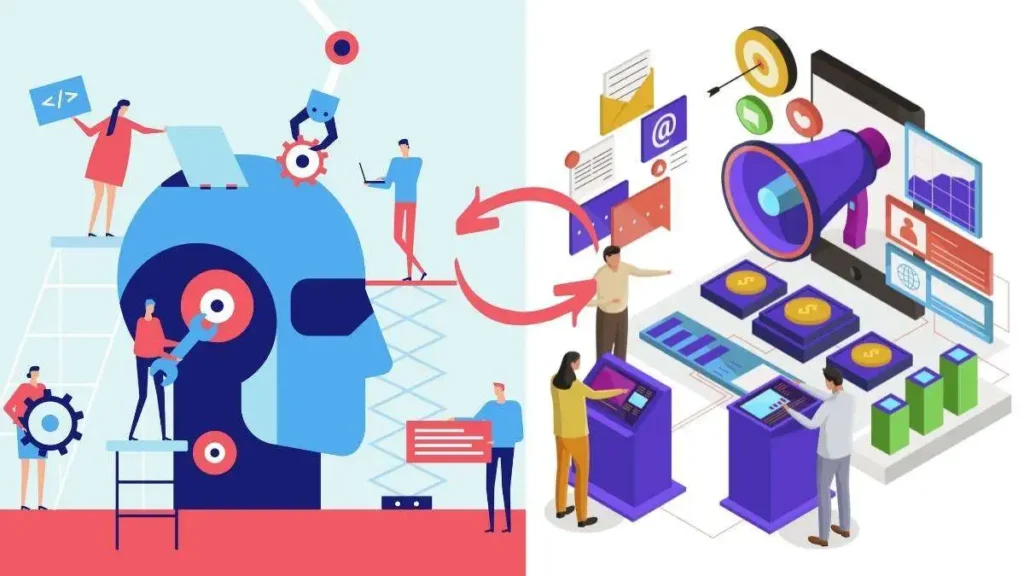- Defining Elasticity:
- Cultivating An Adaptive AI Culture:
- Malleable Strategies:
- Fluid Organizational Structures:
- Adaptable Technology Infrastructure:
- Talent Mobility:
- Business Model Optionality:
- Decision-Making Devolution:
- Continuous Improvement Engines:
- Incentivizing Renewal:
- Simplifying To Accelerate:
- Conclusion:
Leading companies in nascent, fast-moving spaces like AI require uniquely flexible operating models to keep pace with change. Traditional rigid structures struggle to adapt strategies, capabilities, and capacity as market landscapes evolve. In contrast, an elastic framework focused on agility positions AI development companies to continually reinvent themselves in sync with industry transformation.
In this comprehensive guide, we will explore how an elastic operating architecture empowers an adaptive AI development company to sustain innovation and growth over the long term.
Defining Elasticity:
The essence of elasticity involves maintaining the readiness to reshape company building blocks fluidly as market realities shift. This means embracing malleable approaches to strategy, talent, technology, operations, and organization design.
Capacity and focus areas redirect nimbly based on opportunity. Rapid iteration with tight feedback loops becomes the norm, rather than long planning cycles. Investment adapts to the highest impact initiatives. With elasticity, the company evolves symbiotically alongside fast-changing adaptive AI markets.
Cultivating An Adaptive AI Culture:
An elastic framework starts with nurturing an adaptive culture comfortable with constant change. Leadership overtly communicates the value of adaptability and frames it as a competitive advantage. This provides cover for reinventing the course. Inspiring narratives of teams demonstrate embracing uncertainty and fluidity successfully.
Change capability training helps employees practice adaptability psychologically and behaviorally. Reinvention and innovation efforts are visibly celebrated, even if unsuccessful, to encourage future initiatives. Agility metrics like elapsed time to implement new initiatives supplement traditional KPIs. With the right adaptive cultural foundation, elastic moves become second nature.
Malleable Strategies:
Most companies attempt to forecast multi-year strategies. AI firms focused on elasticity design strategies to pivot. Quarterly strategy reviews assess market signals and re-evaluate direction. Annual plans become outdated quickly.
New opportunity pursuits are structured as experiments through prototyping rather than elaborate planning. Strategic optionality is preserved for longer. Strategies emphasize adaptable platforms and assets that are reusable across scenarios versus point solutions.
Change capabilities are nurtured across teams to enable pivots through training, communication, and leadership modeling. KPIs quantify adaptiveness, like the rate of exploring new opportunities and the speed of releasing new offerings. Malleable strategies position organizations to capitalize on unfolding market shifts.
Fluid Organizational Structures:
Traditional, persistent teams impede agility. Elastic AI firms embrace flexible organizational models. Cross-functional teams assemble based on priorities rather than siloed departments. As needs evolve, team compositions are remixed through staff reassignments. Network organizing structures allow open flows between groups. Leadership emerges organically based on topical expertise rather than positions.
Adaptable Technology Infrastructure:
Hardwired technology architectures inhibit rapid responses. Adaptive AI firms leverage flexible infrastructure. Modular microservices and APIs add capabilities independently without cascading changes. Multi-cloud and containerization provide deployment location independence.
Scalable compute and data resources are available through cloud and on-demand pools, allowing capacity flexibility. Configurable platforms and customization layers tailor applications easily for new needs. Extensible data models, interfaces, and integration adapters prevent rework absorbing change. Malleable technology platforms amplify the organizational speed and optionality.
Talent Mobility:
Specialized skills become constraints without mobility across projects and roles. Elastic talent practices enable responsiveness. Cross-training on adjacent skills allows transfers to emerging hot areas through stretch assignments. Internal talent directories providing visibility into capabilities across organizations facilitate recombining teams.
Job rotations present learning opportunities in new focus areas based on overall priorities versus individual interests. Internal mobility is given priority over external recruitment to retain institutional knowledge. Common competency models enable individuals to develop skills continuously along flexible career paths. With talent liquidity, an adaptive AI development company will shape-shift teams into fresh growth opportunities.
Business Model Optionality:
Betting on a single model, like services or licenses, limits adapting to market shifts. Maintaining a mix provides elasticity. Pursuing enterprise license deals as well as transaction-based models provides flexibility to monetize capabilities either way.
Shared services models leverage centralized capability investment across the portfolio to contain costs. Developing aligned open-source stacks enables tapping community contributions for platform innovation. With business model diversity, revenue streams adapt even if certain segments decline.
Decision-Making Devolution:
Centralized decision circuits impede responsiveness at the edge. Elasticity requires devolution. Pushing authority to small, empowered, product-focused teams versus functional departments removes bottlenecks. Designating technical leaders as mini-CEOs of domain areas fosters accountability and urgency.
Team funding is allocated in a venture capital style for initiatives based on merit rather than top-down budgeting. Skipping manager layers pushes decisions closer to the customer and action. Lightweight approval processes like peer reviews supplement formal governance structures. Devolved decision-making transforms organizational metabolism from bureaucratic to entrepreneurial.
Continuous Improvement Engines:
Learning velocity enables keeping pace with market change. A high-performing adaptive AI development company will architect continuous learning loops. Experimentation tools are embedded into products and processes to make learning systematic.
Video game-style performance analytics provide ongoing visibility into team and individual productivity. Skip-level meetings encourage candid bottom-up feedback from the edges rather than filtered perspectives. Adaptive AI applied internally to operational data flags improvement opportunities.
Short iterations with reflection time baked into development sprints accelerate capability building. With learning loops institutionalized, organizations evolve intelligently at the pace of industry innovation.
Incentivizing Renewal:
Adapting successfully hinges on intrinsic motivation to change rather than just directives. Elastic companies incentivize continuous renewal: Employees are rewarded for opting into new roles and domains beyond formal reassignments. Learning milestones earn recognition and professional development opportunities.
Tenures in stagnant positions are discouraged through compensation policies. Intentionally obsoleting legacy systems, processes, and titles reinforces embracing the new. With incentives aligned, inertial resistance fades.
Simplifying To Accelerate:
As organizations scale, complexity grows insidiously, weighed down by accumulated processes. Simplification renews organizational metabolism. Activities are assessed against their strategic contribution versus their operational task percentage. Layers of approval and coordination are stripped out.
Initiatives like zero-based budgeting compel justifying every program based on merit. Structural changes, like spinning out new units, reboot culture. With simplicity, organizational velocity rebounds.
Conclusion:
To thrive over the long term, adaptive AI development companies must architect themselves elastically to match the dynamic pace of technological change. With the right adaptive culture, malleable strategies, fluid organizational models, adaptable technology, empowered teams, and partnerships multiplying capacity, organizations avoid rigidities that eventually inhibit competitors.


